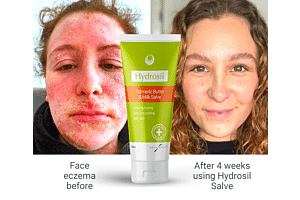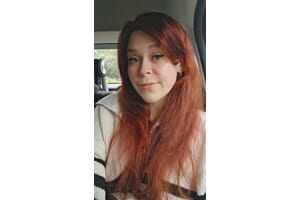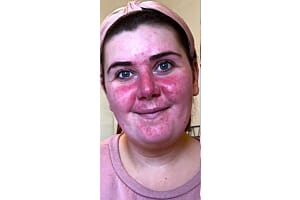Find out the different types of rosacea along with skin conditions that mimic rosacea
Although rosacea is one of the most common conditions treated by dermatologists, it also is one of the most misunderstood. There's no one-stop rosacea cure but knowing more about the different types of rosacea can help with the selection of products to help manage the condition.
Rosacea is a chronic skin condition affecting the central parts of the face and is characterised by several symptoms which can all be present in only one or two. These include frequent deep flushing; persistent inflammation, itchiness interspersed with episodes of papules and pustules and frequent dry patches. Other symptoms may include burning or stinging, edema, plaques and ocular manifestations.
Who gets rosacea?
Rosacea is most commonly seen in adults older than 30 years and is considered to have a strong hereditary component, as it is more commonly seen in individuals of Celtic and Northern European descent as well as those with fair skin. About 30% to 40% of patients report a family member with the condition. However, although these symptoms are all consistent in all types of rosacea, it’s important to know that there are several variants of rosacea as well as some skin conditions that mimic rosacea.
What are the different types of rosacea?
There are approximate four different subtypes of rosacea:
1. Erythematotelangiectatic Rosacea
Characterised with episodic flushing which can last longer than 10 minutes with the central face exhibiting the most intense colour. The redness also may involve the peripheral portion of the face as well as extra facial areas (eg, ears, scalp, neck, chest). Flare ups are mostly triggered by short-term emotional stress, hot drinks, alcohol, spicy foods, exercise, cold or hot weather, and hot water.
2. Papulopustular Rosacea
Papulopustular rosacea generally appears with redness of the central portion of the face along with persistent or intermittent flare ups characterized by small papules and pinpoint pustules. The sides of the face and other areas are usually not affected. A history of flushing often is common however flushing is usually milder than in the erythematotelangiectatic subtype. The constant inflammation may lead to chronic edema (swelling) and phymatous changes (bulging of the pores make a bumpy surface to the skin), which occur more commonly in men than in women.
3. Phymatous Rosacea
Phymatous rosacea is characterized by marked skin thickening and irregular surface nodularities, most commonly involving the nose, chin forehead, ears and eyelids. The papules and pustules that accompany this type of rosacea are often large and may be accompanied by nasal lesions. This type of rosacea frequently affects people with a history of adolescent acne with scarring.
4. Ocular Rosacea
Ocular rosacea usually develops later on after any of the other three subtypes of rosacea are already established. The symptoms of burning or stinging, itching, light sensitivity, and a foreign body sensation in the eyes themselves are common with this type of rosacea.
Kalme Rosacea Skin Care
Skin Shop’s Kalme skin care range is targeted for people who suffer from rosacea and red skin. The products in this range aim to reduce the skin's reactivity, redness, bumpiness and dry points on the face. Take a look at the skin care range consisting of creams, cleansers and cosmetics.
What are the skin conditions that can mimic rosacea?
Dermatomyositis & Symptoms
Dermatomyositis (DM) is an inflammatory condition characterized by varying degrees of muscle weakness and distinctive skin erythema. However, some patients lack muscular involvement and initially show symptoms of skin manifestations only.
This skin condition often appears as a rash on the face with small pustules which can be easily mistaken for rosacea. Other symptoms include nail folds and cutaneous ulcers.
Polymorphous Light Eruption & symptoms
Polymorphous light eruption (PMLE) is characterised by swelling of the skin, papules and plaques on sun-exposed surfaces. The areas of the skin that are most commonly affected are the face, neck, outer aspects of the arms, and dorsal surfaces of the hands. Lesions may appear immediately but often develop several hours after sun exposure.
Symptoms of itching and/or burning usually and unlike rosacea they are temporary. In contrast to rosacea, the onset of PMLE is abrupt, appearing quickly after sun exposure and subsiding within 1 to 7 days. Furthermore, patients with PMLE may experience systemic flu like symptoms after sun exposure.
Seborrheic Dermatitis & symptoms
Seborrheic dermatitis is a chronic relapsing skin disease most commonly involving sebum-rich areas such as the scalp and face.
Similar to rosacea, seborrheic dermatitis appears as swollen patches, papules, or plaques; however, unlike rosacea, the distribution varies from minimal scaliness of the scalp to more widespread involvement on the scalp, eyebrows, ears and upper parts of the shoulders and neck. Although rosacea can also appear as plaques, the plaques of seborrheic dermatitis tend to be greasier in texture.
Acne Vulgaris & treatment
Acne vulgaris is the most common skin disease in humans and is characterised by inflammatory papules, pustules, and nodules as well as blackheads. Acne vulgaris typically affects the areas of skin with the highest density of sebaceous follicles including the face, upper aspect of the chest, and back.
Inflammatory lesions in both acne vulgaris and rosacea may be clinically identical; however, unlike acne vulgaris, rosacea shows a complete absence of blackheads. As a general rule, acne peaks in adolescence, years before rosacea usually becomes prominent. However, some acne patients who are prone to flushing and blushing may develop rosacea later in life.
Clarol Natural Acne Skin Care
Skin Shop’s Clarol skin care range is targeted to people who suffer from acne. The aim of the range is to strengthen the skin’s acne defences using naturally effective ingredients- helping you to achieve clearer skin. Take a look at the range that consists of toners, serums cleansers.







